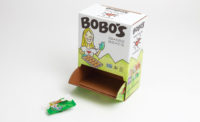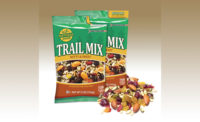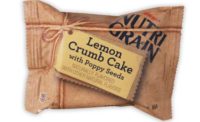Active packaging technologies have evolved to help extend product shelf life for a wide range of snack products and baked goods. Advancements in modified-atmosphere packaging (MAP) and active, enhanced-barrier packaging materials are two instrumental aspects of this evolution, preserving product freshness while maintaining peak food safety.
Fresh and natural
MAP offers food processors a way to naturally improve the shelf life of a wide range of bakery products. The absence of oxygen—or very low oxygen levels—prevents aerobic bacterial growth. Concurrently, a high concentration of carbon dioxide (CO2) inhibits growth of yeast. MAP is especially effective when combined with packaging materials designed with a moisture and/or gas barrier. Moisture prevention is a key to maintaining product texture.
“The goal is to control the gas mixture inside the package, select packaging materials with the right barrier properties and properly seal packages to prevent product degradation. The right gas mixture, coupled with the right barrier materials and proper sealing, help extend shelf life,” says Richard Barrett, director of sales, Americas, package testing and permeation products, MOCON Inc., Minneapolis.
At the retail level, more shoppers are looking for products that are free of additives and preservatives, made with ingredients they can pronounce, according to Kari Dawson-Ekeland, director of marketing, Sealed Air Corp., Charlotte, NC. “Using active-barrier and MAP packages helps producers meet these demands without compromising on shelf life. It also means that producers are able to distribute their products across a much-larger network.”
Another factor is consumers’ growing demand for clean and clear labels. By offering extended shelf life through MAP and high-barrier packaging structures, snack producers and developers of baked goods can minimize—or potentially eliminate—the amount of preservatives in their food products. These attributes can help attract consumers who are seeking “cleaner” food products.
Three packaging requirements must be met to meet extended shelf-life objectives:
- Choose the gas mix that is conducive to maintaining or extending desired shelf life
- Select materials that deliver the right barrier for a specific product and shelf-life requirements
- Monitor seal integrity throughout the manufacturing process
Flexible materials are available in a wide variety of mono- or multi-layer structures, with new options in development on an ongoing basis. “You need to understand how both oxygen and water vapor migrate through the structure and the impact that they have on shelf life. This applies equally to fresh and refrigerated products. Bakery/snack producers must work closely with material suppliers to test these structures so that appropriate materials are selected for the application,” Barrett says.
Ongoing innovations
Sealed Air Corp. offers the Cryovac Freshness Plus active-barrier film technology, which combines an active barrier and MAP to trap oxygen as it tries to penetrate the package. This lets product developers create micro-environments that feature very low oxygen levels. “While high-barrier films can be combined with MAP technology, they depend on the thickness of the film’s barrier layer. An active barrier is able to employ a thinner gauge of film—giving retailers greater product clarity, and a better look and feel,” Dawson-Ekeland explains.
Elite Extrusion Technology Inc., St. Charles, IL, offers its SL10 enhanced barrier polyethylene film, which is designed to extend the shelf life of baked goods and snacks. “SL10’s oxygen transmission rate (OTR) and water vapor transmission rate (WVTR) barrier is 30 percent to 40 percent more effective than standard poly and can result in a 10-day shelf-life increase—without the expense of adding a high-cost barrier film,” says Gordon J. Galloway, director of sales and marketing.
Multivac Inc., Kansas City, MO, provides the baked goods market with a packaging material based on polyethylene terephthalate (PET) that can withstand temperatures ranging from deep-freeze to typical oven baking. This material opens the door to new possibilities of packing raw product to be distributed frozen and then baked fresh, notes Cem Yildirim, market development sales manager. This could include baking by a retailer for sale in the in-store bakery, an operator in the back of the house of a restaurant or other end-user on-site baking applications.
“For example, brownie or muffin batter can be filled automatically into thermoformed packaging, hermetically sealed, frozen, shipped and kept frozen for 6 to 12 months before being taken from the freezer and placed directly in the oven with no extra labor needed to portion or fill baking pans,” says Yildirim. “Also, because the material self-vents, dry air is introduced during the baking process to ensure outstanding crusting.”
Cryovac OvenEase film from Sealed Air Corp. allows food products to go straight from the refrigerator or freezer to the oven in its original package, meaning little to no prep or mess for the consumer or other end user. The company also offers Multi-Seal FlexLOK, which allows consumers to easily open and re-seal packages. This cuts down on at-home re-packaging, which can compromise product safety and lead to food waste.
Extending gluten-free goods
Gluten-free baked goods can have significantly shorter shelf-life periods compared to their traditional counterparts. One approach to help extend their freshness and viable shelf life is active packaging technology and MAP.
Gluten-free baked goods are prone to quick spoilage under ambient conditions. However, MAP enables the gas inside the package to be altered and controlled to create the right environment for the goods to meet shelf-life goals. This is another example of how combining MAP with the correct high-barrier packaging structure and consistent sealing can achieve success. MAP technology has effectively extended the shelf life of gluten-free pan breads from a brief week to over 40 days.
Leak detection
The effectiveness of packaging doing its job and maximizing shelf life is also reliant on sound quality control. “Bakery/snack producers need a high level of quality control. For example, they may think that desired shelf-life goals are not being met because the packaging material isn’t delivering the ideal barrier requirements. However, the problem may be poorly executed seals. In such cases, processors need to step up quality control so they know exactly what is occurring,” Barrett says.
Dansensor, a MOCON company, Minneapolis, has introduced the LeakProtego, a system that tests for potential leaks at levels lower than previously possible. This is of particular significance to bakery/snack producers that are pushing the shelf-life envelope.
The LeakProtego uses a patent-pending sensing system with CO2 as a trace gas to detect leaks down to 50 microns. The technology relies on modular units, each of which can test up to 12 packages per minute. Multiple modules can be combined so that individual package testing can keep up with MAP equipment output. The modules provide processors with critical information, such as individual leak size and rate, so that operators can quickly made necessary production line modifications.
Linde LLC, Bridgewater, NJ, has introduced the MAPAX LD leak-detection system, which is ideal for bakery items and prepared foods packaged with tray sealers or thermoforming machines. It tests MAP packages inline and can achieve 100 percent sampling at speeds up to 120 packages per minute, the company reports.
The system works by adding a small volume of hydrogen (as an indicator) to the modified-atmosphere mixture at the package-sealing stage. The MAPAX LD sensor detects for the gas after the sealed packages travel into the leak-detection unit. “Inline testing has a major advantage over other leak-detection methods, such as needle or immersion testing, which may rely on statistical sampling but typically check only a single package for each batch or test period. With such offline test systems, if a leak is detected, the entire batch is lost, which can result in excessive waste and downtime,” says Erik Fihlman, program manager, prepared foods, Linde.
In contrast, the MAPAX LD system offers non-destructive package testing. Because testing is inline, if a package leak exists due to a pinhole, tear or defect in the seal, a visual alarm notifies line operators to make sure that issues can be immediately resolved. A defective item can be removed from the production line with minimal interruption to the process flow. The system also identifies faulty settings on a machine if, for example, several leaks are found consecutively.
Looking ahead, Fihlman sees more bakery/snack producers adopting 100 percent sampling capabilities: “Most companies today sample MAP products at random or by batch. As food safety becomes even more important, I expect to see companies mitigate risk by implementing systems with 100 percent sampling capabilities, which can be achieved with systems such as the MAPAX LD.”
After all, food safety and extending shelf life travel hand-in-hand as snack producers and baked goods manufacturers continue to head down a road toward the spot where safe, fresh and natural—and peak profitability—all meet.










